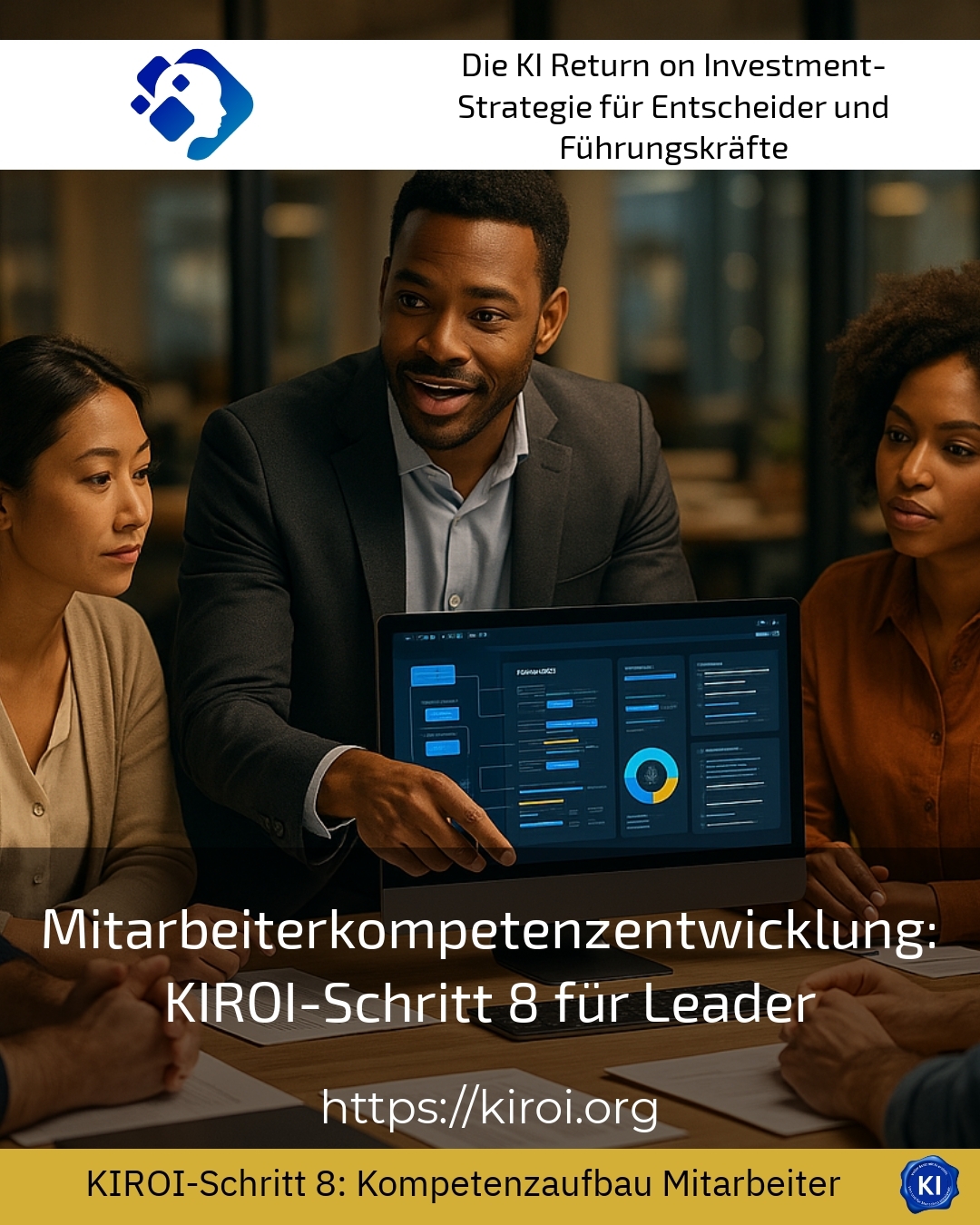Employee skills development plays a central role in the sustainable management of teams and organisations. Especially in today's working world, where markets and technologies are changing rapidly, managers need effective strategies to develop the potential of their employees in a targeted manner.
Employee skills development as a core task for managers
The targeted development of employees' skills is not a one-off project, but a continuous process. Managers not only take on a steering and support role, but also the task of accompanying individual learning paths and creating the right framework for development. Employee competence development encompasses both professional skills and social and methodological competences, which together shape the success of a team.
An example from the automotive industry shows how important structured skills development is: here, employees were specifically trained in new digitalised manufacturing processes in order to increase productivity and quality at the same time. In the healthcare sector, the continuous development of communication and empathy skills supports nursing staff in their dealings with patients. Another example from the IT sector illustrates how agile methods and project management skills are systematically promoted in order to increase flexibility within the team.
KIROI step 8: Effectively support employee skills development
The eighth step of the KIROI approach for managers is about supporting employees' individual learning processes and providing practical support for development measures. The focus is on reflective and situational coaching as well as strengthening self-learning skills. This enables employees to develop their potential independently, while managers act as mentors.
A customer example from the technology sector illustrates this approach: A team leader initiated regular feedback meetings and motivated employees to take advantage of further training opportunities independently. Personal support was more important than a training plan alone. This created a culture that promoted learning and led to noticeably higher retention and performance.
In one consulting firm, a mastermind format was also introduced in which project teams exchange ideas and support each other with impulses. This peer-to-peer learning method complements traditional training programmes and promotes practical orientation and networking among employees.
Practical tips for implementing employee skills development
Successful skills development requires a combination of different methods and integration into everyday working life. Here are some tried and tested approaches:
1. job rotation and project work enable new skills to be learnt through practical experience. In production, for example, employees deliberately moved between departments in order to gain a comprehensive understanding of processes.
2. targeted coaching and mentoring provide individualised support and also address personal issues such as time management or conflict resolution. An example from the financial sector shows how coaching has increased the leadership skills of junior staff.
3. blended learning combines face-to-face seminars with digital self-study. This allows flexible learning times to be realised, for example in large international groups where employees are based at different locations.
The role of managers in sustainable employee skills development
Managers must actively promote motivation to learn and create a framework in which employees feel safe to experiment and make mistakes. Clear communication of learning objectives and regular feedback cycles are key here. Tools such as competency models and skill mapping also help to record the status quo and define target competencies.
In the retail sector, for example, digital skills profiles are often used, which are reviewed in annual employee appraisals. This creates transparency and orientation for skills development. In the manufacturing industry, quality circles are used as interactive workshops to share experiences and develop improvements together.
BEST PRACTICE with one customer (name hidden due to NDA contract) The managers of a medium-sized mechanical engineering company systematically integrated skills development into their annual planning. Employees were given individual learning paths with milestones and coaching sessions that were tailored to current project requirements. Involving employees in the planning of the training programmes encouraged their acceptance and achieved sustainable learning success.
My analysis
Employee skills development is an essential lever for making companies fit for the future. The eighth step in the KIROI model in particular shows how managers can make a significant contribution to individual development with reflective coaching and situational support. Practice-oriented methods such as job rotation, coaching and blended learning complement each other perfectly and enable sustainable growth at an individual and organisational level.
These processes require time, clear structures and respectful cooperation. Managers who provide support and impetus create the conditions for employees to realise their potential. Employee skills development is therefore not an end in itself, but a strategic building block for long-term success.
Further links from the text above:
Skills development: definition + successful examples
Employee development methods & benefits
What is skills development? - teamazing Lexicon
Competence management in practice - Prof. Dr Kai Reinhardt
Popular methods for developing the skills of company employees
Successful skills development: 9 tips and 3 strategies
Successful skills development in 5 steps
For more information and if you have any questions, please contact Contact us or read more blog posts on the topic Artificial intelligence here.















